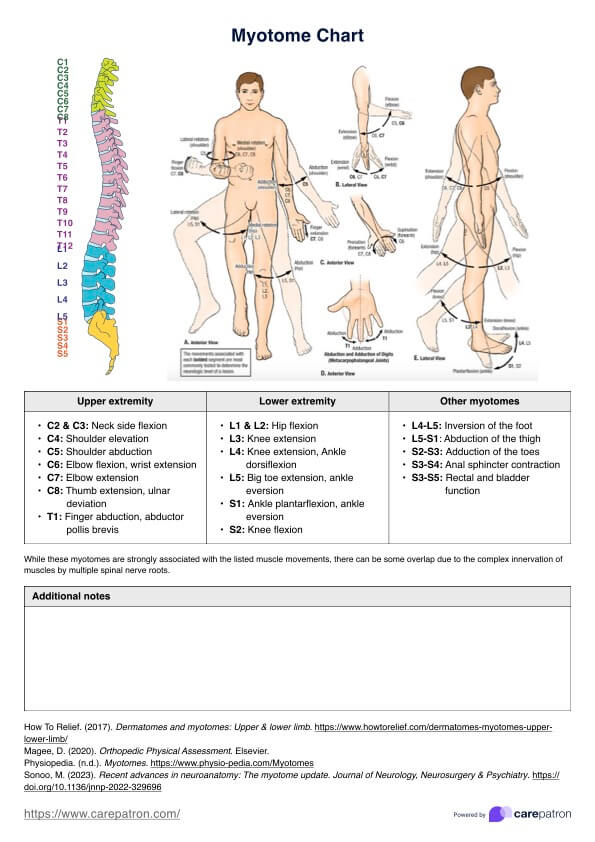We test myotomes to identify muscle weakness and assess the function of specific spinal nerve roots. This helps detect neurological disorders or spinal nerve injuries.

Myotomes Chart
Use our Myotomes chart as a reference for myotomes and muscle groups—for better diagnosis of neuromuscular disorders and spinal nerve injuries.
Use Template
Myotomes Chart Template
Commonly asked questions
The grading of myotomes typically follows a scale from 0 to 5, where 0 indicates no muscle movement and 5 represents normal muscle strength. This grading helps determine the extent of muscle function loss.
No, dermatome and myotome maps are not the same. Dermatomes refer to skin areas innervated by sensory nerves from a single spinal nerve, while myotomes refer to muscle groups controlled by motor nerves from a single spinal nerve root.
EHR and practice management software
Get started for free
*No credit card required
Free
$0/usd
Unlimited clients
Telehealth
1GB of storage
Client portal text
Automated billing and online payments











